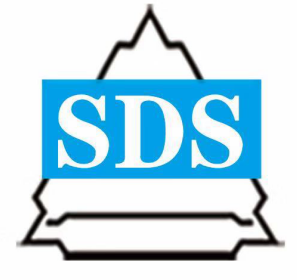Building With Brilliance: Architectural Applications of Metal Fiber Concrete
In the realm of contemporary architecture, where innovation and aesthetics intertwine, metal fiber concrete emerges as a material that not only fortifies structures but also adds a touch of brilliance to architectural designs. This exploration delves into the diverse architectural applications of metal fiber concrete, unveiling its potential to shape the future of construction with both strength and style.
Revolutionizing Architectural Reinforcement
Metal fiber concrete marks a departure from traditional reinforcement methods, offering architects and builders a versatile tool for structural enhancement. The integration of metal fibers into concrete mixes provides increased tensile strength and crack resistance, enabling the creation of structures with enhanced durability and longevity. This departure from conventional reinforcements not only elevates the performance of structures but also opens new avenues for architectural expression.
One of the standout features of metal fibre concrete lies in its ability to accommodate intricate designs and textures. Architects are no longer confined to the limitations of traditional materials; instead, they can harness the flexibility and malleability of metal fiber concrete to realize their creative visions. The material can be molded and shaped to create unique facades, surfaces, and artistic elements, introducing a level of creativity and individuality to architectural designs that was once challenging to achieve.
Elevating Aesthetics and Functionality
Metal fiber concrete seamlessly integrates into modern architectural designs, offering a harmonious balance between aesthetics and functionality. The material's ability to support complex forms and geometric patterns allows architects to push the boundaries of design innovation. From futuristic urban landscapes to avant-garde residential structures, metal fiber concrete becomes a canvas for architectural brilliance, marrying the practicality of reinforcement with the elegance of contemporary design.
The architectural applications of metal fiber concrete extend beyond conventional structures, influencing the creation of iconic landmarks and public spaces. The material's ability to withstand dynamic forces, coupled with its aesthetic versatility, positions it as a preferred choice for architects envisioning structures that transcend the ordinary. From monumental sculptures to intricate pavilions, metal fiber concrete contributes to the creation of architectural landmarks that captivate the imagination and stand as testaments to both engineering prowess and design ingenuity.
Challenges and Future Directions
While the architectural applications of metal fiber concrete are vast and promising, challenges such as cost considerations and the need for standardized design codes remain. Overcoming these challenges requires collaboration between architects, engineers, and material scientists to refine manufacturing processes, improve cost-effectiveness, and establish clear guidelines for design and construction. As the industry addresses these challenges, metal fiber concrete is poised to push architectural boundaries even further, enabling the realization of visionary designs that seamlessly blend form and function.
In conclusion, "Building with Brilliance: Architectural Applications of Metal Fiber Concrete" celebrates the transformative impact of metal fiber concrete on architectural design and construction. As architects and builders continue to seek materials that offer both structural integrity and creative freedom, metal fiber concrete stands out as a beacon of innovation. Its ability to elevate aesthetics, support intricate designs, and contribute to the creation of iconic structures positions it at the forefront of architectural evolution. With ongoing advancements and collaborative efforts, metal fiber concrete is set to shape the future of architectural innovation, leaving an indelible mark on the skylines of tomorrow.
 English
English 한국어
한국어 français
français Deutsch
Deutsch русский
русский português
português العربية
العربية tiếng việt
tiếng việt ไทย
ไทย Polska
Polska Nederland
Nederland